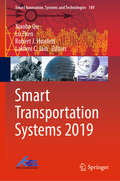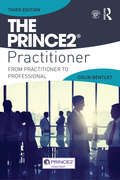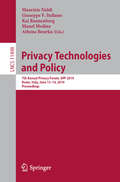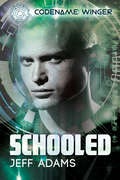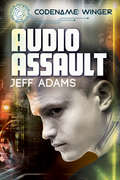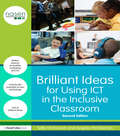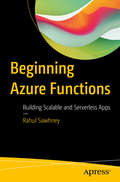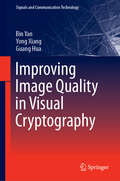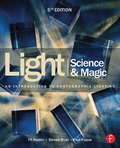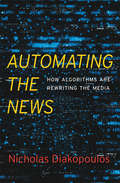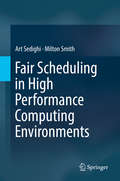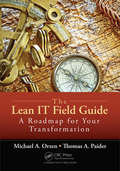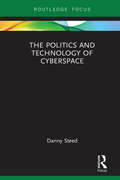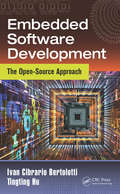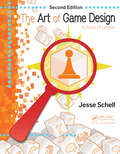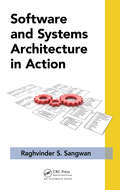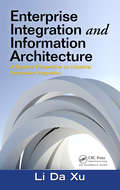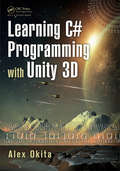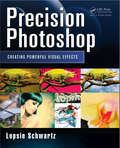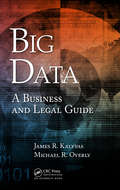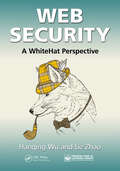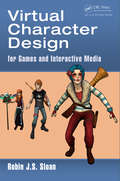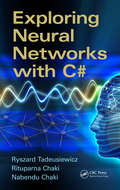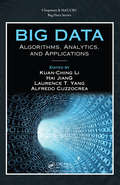- Table View
- List View
Advances in Design for Inclusion: Proceedings of the AHFE 2019 International Conference on Design for Inclusion and the AHFE 2019 International Conference on Human Factors for Apparel and Textile Engineering, July 24-28, 2019, Washington D.C., USA (Advances in Intelligent Systems and Computing #954)
by Giuseppe Di BucchianicoThis book addresses a range of topics in design, such as universal design; design for all; digital inclusion; universal usability; and accessibility of technologies regardless of users’ age, financial situation, education, geographic location, culture and language. It especially focuses on accessibility for people with auditory, cognitive, neurological, and visual impairments, ageing populations, and mobility for those with special physical needs. The book explores some of the overlaps between inclusive design and web accessibility to help managers, designers, developers, policy makers, and researchers optimize their efforts in these areas. Based on the AHFE 2019 International Conference on Design for Inclusion, held on July 24-28, held in Washington D.C., USA, it discusses new design technologies and highlights the disparate needs of the individuals within a community. Thanks to its multidisciplinary approach, it provides readers with various backgrounds with a timely, practice-oriented guide to design for inclusion.
Smart Transportation Systems 2019 (Smart Innovation, Systems and Technologies #149)
by Lakhmi C. Jain Robert J. Howlett Xiaobo Qu Lu ZhenThe book gathers selected papers presented at the KES International Symposium on Smart Transportation Systems (KES-STS 2019). Modern transportation systems have undergone a rapid transformation in recent years. This has produced a range of vehicle technology innovations such as connected vehicles, self-driving cars, electric vehicles, Hyperloop, and even flying cars, and with them, fundamental changes in transport systems around the world. The book discusses current challenges, innovations and breakthroughs in Smart Transportation Systems, as well as transport infrastructure modeling, safety analysis, freeway operations, intersection analysis, and other related cutting-edge topics.
The PRINCE2 Practitioner: From Practitioner to Professional
by Colin BentleyStruggling to apply the principles of PRINCE2 in practice? Need guidance on adapting the process for smaller projects? PRINCE2 for Practitioners provides the solution. This practical reference, matching the details and requirements of the 2009 PRINCE2 manual, contains new and updated real-life examples and case studies, links between related components and processes, and clear guidance on how to fine-tune the method to help you manage projects successfully, whatever the context and size. An affordable alternative to expensive training, this best-selling handbook by PRINCE2 expert Colin Bentley is an indispensable addition to your project management bookshelf and a companion to the PRINCE2 for Beginners book. If you have passed the PRINCE2 exams, it will help you keep your knowledge and skills up to date to maintain registered status and enable you to apply the theory of PRINCE2 to everyday project work after certification.
Privacy Technologies and Policy: 7th Annual Privacy Forum, APF 2019, Rome, Italy, June 13–14, 2019, Proceedings (Lecture Notes in Computer Science #11498)
by Kai Rannenberg Manel Medina Maurizio Naldi Giuseppe F. Italiano Athena BourkaThis book constitutes the refereed conference proceedings of the 7th Annual Privacy Forum, APF 2019, held in Rome,Italy, in June 2019. The 11 revised full papers were carefully reviewed and selected from 49 submissions. The papers present original work on the themes of data protection and privacy and their repercussions on technology, business, government, law, society, policy and law enforcement bridging the gap between research, business models, and policy. They are organized in topical sections on transparency, users' rights, risk assessment, and applications.
Schooled (Codename: Winger #2)
by Jeff AdamsTheo Reese is a high school student who’s also a secret agent. Usually those lives are kept separate, but now he must be both at once. <p><p> Theo lends his expertise to his school’s computer science club as they gear up for a competition, but his talents are also required by the covert agency he works for. Someone has stolen an encrypted key that can allow them to control the nation’s energy grids. The possibilities are catastrophic unless Theo and his team can reclaim the file. <p> Theo locates the file in an unexpected place—the computer science competition. As Winger, his secret identity, he must recover the file and keep his teammates safe from the unscrupulous thieves…. But can he do it without revealing his secrets? He can’t blow his cover, especially with so many of his classmates around.
Audio Assault. (Codename: Winger #3)
by Jeff AdamsCodename: Winger: Book ThreeFor teenage secret agent Theo Reese, summer break isn’t a time to relax. In addition to his duties for Tactical Operational Support, Theo’s got a school project and, more than anything, wants to spend time with his boyfriend, Eddie. A family trip to New York City is the last thing Theo needs. But a friend of Theo’s father is in need of the Reese family’s special skills. Oliver Glenwood heads a music empire, and his daughter, Sofia, is a rising pop star—one who’d drawn the attention of kidnappers. During the investigation, Theo discovers the threat poses more danger than originally suspected. Someone has planted code in Glenwood Music’s songs that can steal information from any personal device—or play a tone that can rouse uncontrollable rage. The consequences will be disastrous if the infected songs are downloaded by the public. Preventing worldwide catastrophe becomes even more difficult when Eddie arrives in the city, hoping to spend some quality time with Theo. No one ever said being a covert agent would be easy.
Brilliant Ideas for Using ICT in the Inclusive Classroom (David Fulton / Nasen Ser.)
by Sally McKeown Angela McGlashonRunner up in Teach Secondary’s Technology and Innovation Awards 2014 sponsored by Lego, Brilliant Ideas for using ICT in the Inclusive Classroom provides lots of simple practical ideas showing teachers and support staff how they can use ICT to boost the achievement of all pupils. How can you use ICT to boost the achievement of all your pupils? This practical teachers’ guide will help you to unlock the enormous potential of new technology in order to enhance pupils’ learning, particularly for young people with additional needs. Written by two of the UK’s leading technology experts, this invaluable and newly updated resource will enable you to use ICT effectively to make lessons more accessible, motivating and fun. With fifty illustrated case studies and twenty starter activities, this practical resource will help you to introduce new technology into the inclusive classroom. It has been specifically designed to help develop your pupils’ key skills, such as problem solving, developing concepts and communicating to different audiences. In each activity, the authors show why and how a particular resource was used and show how similar techniques can be implemented to open up the curriculum to your learners. The authors include timely and realistic advice on how to use a range of technologies from the cheap and cheerful – and even free – to more sophisticated and specialist packages. Find out about: Apps Blogging Digital animation Podcasting Digital storytelling Wikis Geocaching Coding Games and gaming Sat nav Art packages Twitter Whether you’re already techno-savvy or looking to get started with ICT, this book is full of brilliant ideas on how to engage learners of all abilities using technology. If you’re looking for inspiration on how to integrate creative uses of ICT with the curriculum, this book will prove invaluable.
Beginning Azure Functions: Building Scalable and Serverless Apps
by Rahul SawhneyCreate highly scalable apps and monitor Azure functions in production using Azure Functions 2.0. This book takes you through durable functions for statefulness and covers not only the basics, but also how to create bindings in durable functions. It is a deep dive into the Azure Functions serverless API and will guide you through the process of converting monolithic applications to use Azure functions. The author starts by giving an overview of serverless architecture and Azure functions along with Azure App Services. You will then learn to create basic Azure functions using the Azure portal and Visual Studio. Next, you will create a serverless API using Azure Functions and migrate an existing application to Azure Functions. Finally, you will deploy an Azure function and monitor it in production. Here you will deploy the Azure function using ARM templates and secure and configure CORS for Azure functions. After reading this book, you will be able to understand Azure functions and create them using the Azure portal and Visual Studio. What You Will LearnUnderstand and use triggers and bindings in an Azure function Create a serverless API using Azure Functions and OpenAPIDeploy an Azure function and monitor it in productionUnderstand durable Azure functions, including scalability, disaster recovery, and geo-distributionWho This Book Is ForDevelopers who want to get started with Azure Functions. DevOps will also find value in the guidance for deploying and monitoring functions.
Improving Image Quality in Visual Cryptography (Signals and Communication Technology)
by Yong Xiang Guang Hua Bin YanThis book comprehensively covers the important efforts in improving the quality of images in visual cryptography (VC), with a focus on cases with gray scale images. It not only covers schemes in traditional VC and extended VC for binary secret images, but also the latest development in the analysis-by-synthesis approach. This book distinguishes itself from the existing literature in three ways. First, it not only reviews traditional VC for binary secret images, but also covers recent efforts in improving visual quality for gray scale secret images. Second, not only traditional quality measures are reviewed, but also measures that were not used for measuring perceptual quality of decrypted secret images, such as Radially Averaged Power Spectrum Density (RAPSD) and residual variance, are employed for evaluating and guiding the design of VC algorithms. Third, unlike most VC books following a mathematical formal style, this book tries to make a balance between engineering intuition and mathematical reasoning. All the targeted problems and corresponding solutions are fully motivated by practical applications and evaluated by experimental tests, while important security issues are presented as mathematical proof. Furthermore, important algorithms are summarized as pseudocodes, thus enabling the readers to reproduce the results in the book. Therefore, this book serves as a tutorial for readers with an engineering background as well as for experts in related areas to understand the basics and research frontiers in visual cryptography.
Light Science & Magic: An Introduction to Photographic Lighting
by Steven Biver Fil Hunter Paul FuquaPhotographic lighting is a topic that will never go out of style, no matter how sophisticated cameras and other technology get. Even with the most high-tech gear, photographers still need to put a lot of thought and vision into lighting their photographs in order to get great results. This key skill has the power to dramatically and quickly improve photographs. Light Science and Magic provides you with a comprehensive theory of the nature and principles of light, with examples and instructions for practical application. Featuring photographs, diagrams, and step-by-step instructions, this book speaks to photographers of varying levels. It provides invaluable information on how to light the most difficult subjects, such as surfaces, metal, glass, liquids, extremes (black-on-black and white-on-white), and portraits. This new edition includes: All new chapter titled "Setting Up Your New Studio" A re-vamped and expanded chapter 8 now titled "Making Portraits" New appendix of reliable photo gear sources Over 100 new photographs and informational sidebars Updated information about advances in flash equipment, LED panels and fluorescent lights Styles of lighting continue to change, but the nature of light will always remain the same. Once photographers understand the basic physics of lighting, they can apply that knowledge to a broad range of photographic styles.
Automating the News: How Algorithms Are Rewriting the Media
by Nicholas DiakopoulosFrom hidden connections in big data to bots spreading fake news, journalism is increasingly computer-generated. Nicholas Diakopoulos explains the present and future of a world in which algorithms have changed how the news is created, disseminated, and received, and he shows why journalists—and their values—are at little risk of being replaced.
Fair Scheduling in High Performance Computing Environments
by Art Sedighi Milton SmithThis book introduces a new scheduler to fairly and efficiently distribute system resources to many users of varying usage patterns compete for them in large shared computing environments. The Rawlsian Fair scheduler developed for this effort is shown to boost performance while reducing delay in high performance computing workloads of certain types including the following four types examined in this book: i. Class A – similar but complementary workloads ii. Class B – similar but steady vs intermittent workloads iii. Class C – Large vs small workloads iv. Class D – Large vs noise-like workloads This new scheduler achieves short-term fairness for small timescale demanding rapid response to varying workloads and usage profiles. Rawlsian Fair scheduler is shown to consistently benefit workload Classes C and D while it only benefits Classes A and B workloads where they become disproportionate as the number of users increases. A simulation framework, dSim, simulates the new Rawlsian Fair scheduling mechanism. The dSim helps achieve instantaneous fairness in High Performance Computing environments, effective utilization of computing resources, and user satisfaction through the Rawlsian Fair scheduler.
The Lean IT Field Guide: A Roadmap for Your Transformation
by Michael A. Orzen Thomas A. PaiderHow many IT books have you read that are long on theory and short on practical application? They are interesting, but not very impactful. They provide a framework from which to think and understand, but lack a process from which to act. Addressing this urgent need for the IT community, The Lean IT Field Guide explains how to initiate, execute, and sustain a lean IT transformation.Illuminating a clear path to lean IT, the authors integrate more than two decades of combined experience to provide you with a proven method for creating and sustaining a true lean IT workplace. This field guide not only highlights the organizational techniques of more agile and lean processes, but also the leadership work required to help management adopt these new approaches.Based on proven methods from different industries, including banking, manufacturing, insurance, food and beverage, and logistics, the book details a clear model that covers all the components you need to achieve and sustain a favorable work environment and culture in support of lean IT.Filled with anecdotes and case studies from actual businesses, the book includes pictures, templates, and examples that illustrate the application of the lean methods discussed.
The Politics and Technology of Cyberspace (Modern Security Studies)
by Danny SteedAddressing the problems surrounding cyber security and cyberspace, this book bridges the gap between the technical and political worlds to increase our understanding of this major security concern in our IT-dependent society, and the risks it presents. Only by establishing a sound technical understanding of what is and is not possible can a properly informed discussion take place, and political visions toward cyberspace accurately map and predict the future of cyber security. Combining research from the technical world that creates cyberspace with that of the political world, which seeks to understand the consequences and uses of cyberspace, Steed analyses and explains the circumstances that have led to current situations whereby IT-dependent societies are vulnerable to, and regularly victims of, hacking, terrorism, espionage, and cyberwar. Two fundamental questions are considered throughout the book: what circumstances led to this state of affairs? And what solutions exist for the future of cyberspace? In tackling these questions, Steed also analyses the emergent and increasingly competing political positions on offer to stabilise the landscape of cyberspace. This interdisciplinary work will appeal to researchers and students of Security Studies, Intelligence Studies, Strategic Studies and International Relations as well as cybersecurity practitioners charged with developing policy options.
Embedded Software Development: The Open-Source Approach (Embedded Systems #4)
by Ivan Cibrario Bertolotti Tingting HuEmbedded Software Development: The Open-Source Approach delivers a practical introduction to embedded software development, with a focus on open-source components. This programmer-centric book is written in a way that enables even novice practitioners to grasp the development process as a whole. Incorporating real code fragments and explicit, real-world open-source operating system references (in particular, FreeRTOS) throughout, the text: Defines the role and purpose of embedded systems, describing their internal structure and interfacing with software development tools Examines the inner workings of the GNU compiler collection (GCC)-based software development system or, in other words, toolchain Presents software execution models that can be adopted profitably to model and express concurrency Addresses the basic nomenclature, models, and concepts related to task-based scheduling algorithms Shows how an open-source protocol stack can be integrated in an embedded system and interfaced with other software components Analyzes the main components of the FreeRTOS Application Programming Interface (API), detailing the implementation of key operating system concepts Discusses advanced topics such as formal verification, model checking, runtime checks, memory corruption, security, and dependability Embedded Software Development: The Open-Source Approach capitalizes on the authors’ extensive research on real-time operating systems and communications used in embedded applications, often carried out in strict cooperation with industry. Thus, the book serves as a springboard for further research.
The Art of Game Design: A Book of Lenses, Second Edition
by Jesse SchellGood game design happens when you view your game from as many perspectives as possible. Written by one of the world's top game designers, The Art of Game Design presents 100+ sets of questions, or different lenses, for viewing a game's design, encompassing diverse fields such as psychology, architecture, music, visual design, film, software enginee
Software and Systems Architecture in Action (Applied Software Engineering Ser.)
by Raghvinder S. SangwanModern-day projects require software and systems engineers to work together in realizing architectures of large and complex software-intensive systems. To date, the two have used their own tools and methods to deal with similar issues when it comes to the requirements, design, testing, maintenance, and evolution of these architectures.Software and
Enterprise Integration and Information Architecture: A Systems Perspective on Industrial Information Integration (Advances In Systems Science And Engineering (asse) Ser.)
by Li Da XuEnterprise solutions have emerged as promising tools for integrating and extending business processes across business functions. Supplying a clear and comprehensive introduction to the field, this book provides a detailed description of enterprise information integration-from the development of enterprise systems to extended enterprise information
Learning C# Programming with Unity 3D
by Alex OkitaDesigned to give you enough familiarity in a programming language to be immediately productive, Learning C# Programming with Unity 3D provides the basics of programming and brings you quickly up to speed. Organized into easy-to-follow lessons, the book covers how C# is used to make a game in Unity3D. After reading this book, you will be armed with
Precision Photoshop: Creating Powerful Visual Effects
by Lopsie SchwartzThe Essentials of Photoshop for Creative ProfessionalsThere are plenty of books on Photoshop for photographers; for everyone else, there's Precision Photoshop: Creating Powerful Visual Effects. In clear, conversational language using extensive images and screenshots, this book gives you in-depth guidance on learning how to use Photoshop. The author
Big Data: A Business and Legal Guide
by James R. Kalyvas Michael R. OverlyBig Data: A Business and Legal Guide supplies a clear understanding of the interrelationships between Big Data, the new business insights it reveals, and the laws, regulations, and contracting practices that impact the use of the insights and the data. Providing business executives and lawyers (in-house and in private practice) with an accessible p
Web Security: A WhiteHat Perspective
by Hanqing WuIn late 2013, approximately 40 million customer debit and credit cards were leaked in a data breach at Target. This catastrophic event, deemed one of the biggest data breaches ever, clearly showed that many companies need to significantly improve their information security strategies. Web Security: A White Hat Perspective presents a comprehensive g
Virtual Character Design for Games and Interactive Media
by Robin James SloanWhile the earliest character representations in video games were rudimentary in terms of their presentation and performance, the virtual characters that appear in games today can be extremely complex and lifelike. These are characters that have the potential to make a powerful and emotional connection with gamers. As virtual characters become more
Exploring Neural Networks with C#
by Nabendu Chaki Rituparna Chaki Ryszard TadeusiewiczThe utility of artificial neural network models lies in the fact that they can be used to infer functions from observations making them especially useful in applications where the complexity of data or tasks makes the design of such functions by hand impractical.Exploring Neural Networks with C# presents the important properties of neural networks
Big Data: Algorithms, Analytics, and Applications (Chapman And Hall/crc Big Data Ser.)
by Hai Jiang Alfredo Cuzzocrea Laurence T. Yang Kuan-Ching LiAs today's organizations are capturing exponentially larger amounts of data than ever, now is the time for organizations to rethink how they digest that data. Through advanced algorithms and analytics techniques, organizations can harness this data, discover hidden patterns, and use the newly acquired knowledge to achieve competitive advantages.Pre

